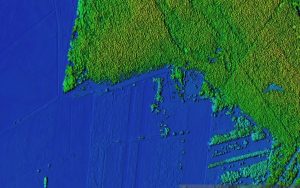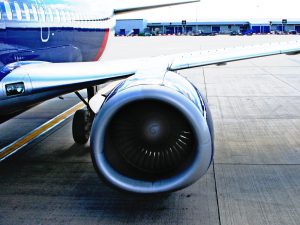Origin Of Flight Simulator GeoFS
 In the realm of flight simulation, GeoFS Flight Simulator has emerged as a notable player, attracting aviation enthusiasts and newcomers alike. What sets GeoFS apart is not only its impressive features but also its origins rooted in the passion of a single individual. This article delves into the journey of how GeoFS was developed, the challenges faced, and the vision behind creating an accessible and immersive flight simulation experience.
In the realm of flight simulation, GeoFS Flight Simulator has emerged as a notable player, attracting aviation enthusiasts and newcomers alike. What sets GeoFS apart is not only its impressive features but also its origins rooted in the passion of a single individual. This article delves into the journey of how GeoFS was developed, the challenges faced, and the vision behind creating an accessible and immersive flight simulation experience.
Vision behind GeoFS Flight Simulator
The story of flight simulator GeoFS begins with a passionate aviation enthusiast who dreamed of making flight simulation accessible to everyone. Unlike many other simulators that required expensive hardware and software, this visionary aimed to create a platform that could be accessed from any device with an internet connection. The goal was to democratize flight simulation, allowing anyone with an interest in aviation to experience the thrill of flying without breaking the bank.
Inspiration for development
The inspiration for creating GeoFS came from a personal love for aviation. The developer recognized the complexities and barriers that often deterred newcomers from engaging with traditional flight simulators. Many of these simulators required advanced computer systems, expensive add-ons, and a steep learning curve. This realization sparked the idea of building a flight simulator that prioritised accessibility while still delivering a realistic and enjoyable flying experience.
Technical foundations of GeoFS
- Choosing the right technologies: To bring the vision of GeoFS to life, the developer had to select the right technologies. The aim was to create a web-based platform that could run seamlessly across various devices. This decision led to the use of modern web technologies such as HTML5, WebGL, and JavaScript. These technologies allowed for the creation of a visually stunning and responsive simulation environment without the need for heavy downloads or installations.
- Creating realistic flight dynamics: The primary challenges faced during development was achieving realistic flight dynamics. The developer needed to replicate the complex physics of real aircraft to create an authentic flying experience. Extensive research was conducted into the principles of aerodynamics, allowing for the incorporation of realistic lift, drag, and thrust mechanics. This foundational work ensured that users would feel the nuances of flying, whether soaring through the clouds or landing at an airport.
Crafting the visual experience
- Global scenery development: A significant aspect of GeoFS Flight Simulator is its impressive global scenery. To provide users with an immersive experience, the developer sought high-quality geographical data to represent the world accurately. This involved utilizing data from various sources, including open-source projects and satellite imagery. The result is a stunning visual environment that allows users to explore detailed landscapes, cityscapes, and diverse terrains from the comfort of their homes.
- Enhancing graphics with WebGL: Incorporating WebGL technology played a crucial role in delivering the high-quality graphics seen in GeoFS. WebGL enables the rendering of 3D graphics within a web browser, allowing for a seamless and visually engaging experience. The developer’s commitment to utilizing cutting-edge technologies ensured that users would not only enjoy the flight experience but also appreciate the stunning visuals that accompany it.
Addressing user accessibility
- Making flight simulation available to everyone: The core principle guiding the development of GeoFS Flight Simulator was user accessibility. By creating a web-based platform, the developer eliminated the need for expensive hardware and complicated installations. This move significantly lowered the barrier to entry for aspiring pilots and aviation enthusiasts, allowing a broader audience to engage with flight simulation.
- User-friendly interface design: Another crucial aspect of making GeoFS accessible was the design of its user interface. Understanding that many users would be newcomers to flight simulation, the developer prioritized creating a simple, intuitive interface. The aim was to ensure that users could quickly learn to navigate the simulator, understand the controls, and enjoy their flying experience without feeling overwhelmed. This user-centric approach has been instrumental in attracting a diverse user base.
Role of community in development
- Building a supportive user community: As GeoFS Flight Simulator began to gain traction, a vibrant community of users started to form. The developer recognized the importance of engaging with this community, listening to their feedback, and incorporating suggestions into the simulator’s development. This collaborative approach not only helped improve the software but also fostered a sense of belonging among users.
- Forums and social media engagement: To facilitate communication with users, the developer established forums and social media channels. These platforms became essential for users to share their experiences, report bugs, and discuss ideas for future enhancements. By actively participating in these discussions, the developer was able to gain valuable insights into user preferences and expectations, ultimately shaping the direction of GeoFS Flight Simulator.
Challenges faced during development
- Overcoming technical obstacles: The journey of developing GeoFS Flight Simulator was not without its challenges. One significant hurdle was optimizing the simulator to run smoothly on a wide range of devices. Ensuring that users with different hardware capabilities could enjoy the same high-quality experience required continuous testing and refinement.
- Balancing features and performance: Another challenge involved balancing the richness of features with the performance of the simulator. The developer had to make strategic decisions about which features to prioritize and how to implement them without compromising the simulator’s speed and responsiveness. This delicate balancing act was crucial in delivering a satisfying user experience.
Expanding the features of GeoFS Flight Simulator
- Diverse aircraft selection: As GeoFS evolved, the developer sought to expand its offerings by incorporating a diverse selection of aircraft. This addition not only enhanced the user experience but also allowed for educational opportunities. Users could explore various aircraft types, from small general aviation planes to large commercial jets, learning about their unique characteristics and operational aspects.
- Real-time weather simulation: Another feature that significantly enhanced the realism of GeoFS Flight Simulator was the implementation of real-time weather simulation. This feature allows users to experience flying under various weather conditions, from clear blue skies to turbulent storms. By integrating dynamic weather patterns, the developer aimed to provide users with a more authentic flying experience, challenging them to adapt to changing environments.
- Multiplayer mode: To further enrich the GeoFS experience, the developer introduced a multiplayer mode, allowing users to fly together in a shared airspace. This social element added excitement to the simulator, enabling users to communicate, coordinate flights, and engage in friendly competitions. The multiplayer feature transformed the simulator from a solitary experience into a vibrant community event.
Future of GeoFS Flight Simulator
- Continuous improvement and updates: The development journey of GeoFS Flight Simulator is far from over. The developer remains committed to continuously improving the platform, incorporating user feedback, and adding new features. Regular updates ensure that users can look forward to exciting enhancements and expansions that will further enrich their flying experience.
- Expanding the community: As the GeoFS community continues to grow, the developer is dedicated to fostering a supportive and engaging environment. Initiatives such as community events, contests, and collaborative projects aim to bring users together, celebrating their shared passion for aviation. This sense of community not only enriches the GeoFS experience but also keeps users motivated and engaged.
- Embracing emerging technologies: Looking ahead, the developer is keen on exploring emerging technologies that could enhance the GeoFS Flight Simulator experience. Innovations in virtual reality, artificial intelligence, and machine learning hold exciting potential for the future of flight simulation. By embracing these advancements, the developer aims to create an even more immersive and engaging experience for users.
Flight simulator platform
The journey of developing GeoFS Flight Simulator is a testament to the power of passion and vision in the realm of aviation. Rooted in the desire to make flight simulation accessible to all, the developer has created a platform that combines realistic flight dynamics, stunning visuals, and an engaging community. As GeoFS continues to evolve, its commitment to user accessibility and innovative features ensures that it will remain a beloved choice for aviation enthusiasts around the world.
Whether you are a novice eager to take your first flight or a seasoned pilot looking for an engaging platform to refine your skills, GeoFS Flight Simulator offers an exceptional experience that captures the spirit of aviation. With its rich features, user-friendly design, and a passionate community, the skies are truly open for exploration.










